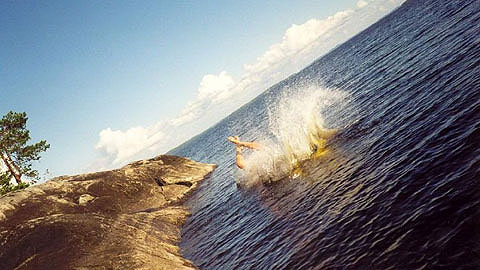Break Your Stereotypes about Finns
What comes to your mind when you think of the Finns? Perhaps hardworking, honest and quiet people with guts? Are you going wrong? Researchers explain how stereotypes can be a mixed blessing.

Professor Helena Ruotsala from the subject of European Ethnology and Postdoctoral Research Fellow Olli Löytty from the subject of Finnish literature come across with impressions and views about the Finns in their work.
Olli Löytty tells that stereotypes are inevitable.
We need to have these categories since they help us to piece together the complex world we live in. A nation or a nationality can't exist without the social context. Therefore, it is impossible to even picture a situation without any comparisons or connections, we simply don´t have the imagination for that.
According to Löytty we are programmed to automatically make comparisons and form stereotypes. The problem is that as sources of information stereotypes are dubious and they are not to be treated like the sole truth since this can lead to too negative and narrow views.
- Whether the stereotypes are true or not, we use them in the social interaction, he states.
Silence Is Golden
When Helena Ruotsala taught courses about Finns and Finland in Germany, she noticed that the first associations of the students were quite similar. When asked to tell something about Finland, words like sauna, clean nature, sparsely populated, guts, quiet people, heavy metal and ice hockey were commonly used.
 Löytty tells that the stereotypes are based on the groups’ own expectations and views and external opinions of others alike.
Löytty tells that the stereotypes are based on the groups’ own expectations and views and external opinions of others alike.
A variety of factors like history, natural conditions, literature, music, movies, speech culture and education amongst other things have an impact.
According to Ruotsala the Finnish language is full of phrases that express the characteristics of Finns or things that are valuated in Finland. “You must go by a man’s word” and “Silence is golden” pay tribute to honesty, trustworthiness and listening in silence instead of talking all the time or over other people.
- The products of culture can either confirm or alter stereotypes. In adds the positive sides of the image of Finland like clean lakes are highlighted. And for example, the characters of Aki Kaurismäki´s movies convey an image about extremely introvert Finns, Ruotsala tells.
- In my opinion, a comedy is interesting when it doesn’t make jokes in the expense of stereotypes but pulls the rug from under them. In Finland, the series Märät Säpikkäät has done this with the images about the Sami people of Lapland, Löytty says.
Ride Out the Storm with Guts
The word guts (sisu) is familiar to every Finn.
- Perhaps it has to do with the hard natural conditions and coldness that especially the previous generations had to battle with when trying to croft and make a living. History and particularly the Second World War when a small Finland defended oneself against the Russian troops also highlight this concept, Ruotsala reflects.
- On the other hand, this is also a good example of how stereotypes are not necessarily unique. Many other nations have this special feeling about their guts and strength, Löytty continues.
Sometimes one particular thing can rise to be so important that it tends to describe the whole nation.
- It is an interesting question, how this happens and why certain things are highlighted. We have had some strong brands and creators like Alvar Aalto, but now all of the sudden the whole Finland has a brand of a design country, Löytty ponders.
- For a small country, it can be a big thing, if an athlete or a team succeeds in some sport on a high level and this sport can become popular easily, Ruotsala says.
When asked about misrepresented stereotypes, Löytty mentions the anti-immigration views.
- It seems to me that the negative views about immigration have been reported on the media more increasingly although they are the voice of a small minority and most of the Finns are open minded.
A Blond Heavy Metal Fan?
Ruotsala and Löytty emphasise that it is important to remember that stereotypes and images are always individual and they are also in constant change. Since the world is full on information, the stereotypes are evolving more and more elaborate.
- You can’t and shouldn’t deny the differences that exist in the world, but the best solution would be to treat stereotypes only as starting points and keep an open mind, Löytty concludes.
So if you come across with a dark haired Finn, who doesn’t like heavy metal or the sauna, doesn’t collect domestic design and talks loudly all the time, that’s just par for the course.


Professor Helena Ruotsala and Postdoctoral Research Fellow Olli Löytty, University of Turku
Text: Henna Borisoff
Photographs: Adolfo2007, hugovk, Lauri Rantala and Henna Borisoff